Lithium-related discovery could extend battery life and improve safety
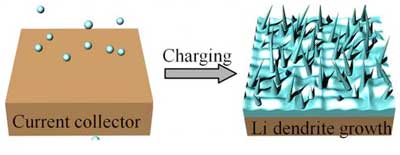 New solution for mitigating dendrite growth shows promise for all batteries.
New solution for mitigating dendrite growth shows promise for all batteries.
Mar 6th, 2018
Read more
 New solution for mitigating dendrite growth shows promise for all batteries.
New solution for mitigating dendrite growth shows promise for all batteries.
Mar 6th, 2018
Read more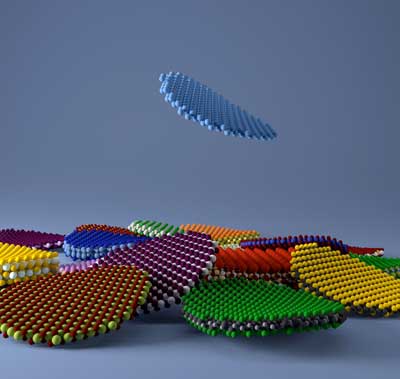 A research team has identified more than 1,000 materials with a particularly interesting 2D structure. Their research paves the way for groundbreaking technological applications.
A research team has identified more than 1,000 materials with a particularly interesting 2D structure. Their research paves the way for groundbreaking technological applications.
Mar 6th, 2018
Read more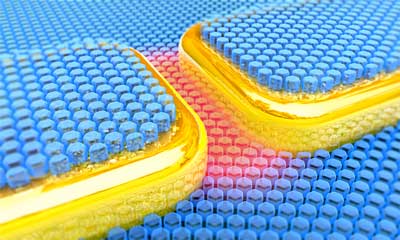 Light and vibrations intertwine inside a nanoscale cavity.
Light and vibrations intertwine inside a nanoscale cavity.
Mar 6th, 2018
Read more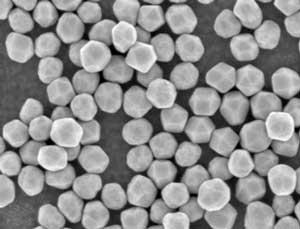 Researchers have developed the diagnostic tools that are being used to advance an improved and integrated understanding of plasma-based synthesis - a widely used but poorly understood tool for creating nanostructures.
Researchers have developed the diagnostic tools that are being used to advance an improved and integrated understanding of plasma-based synthesis - a widely used but poorly understood tool for creating nanostructures.
Mar 6th, 2018
Read more In this research, single 2-D layers of strontium iridium oxide were sandwiched between either one, two, or three layers of strontium titanium oxide to form three distinct superlattices. Researchers then used x-ray scattering to probe the magnetic structure of each superlattice.
In this research, single 2-D layers of strontium iridium oxide were sandwiched between either one, two, or three layers of strontium titanium oxide to form three distinct superlattices. Researchers then used x-ray scattering to probe the magnetic structure of each superlattice.
Mar 6th, 2018
Read more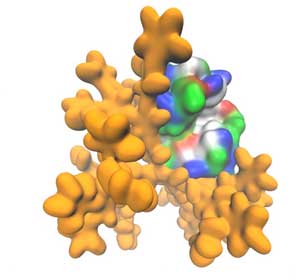 Researchers found that when mixing dendrimers and proteins, multilayer films are spontaneously formed and retain the activity and function of protein enzymes, which determines their potential as a material for creating biosensors and medical products.
Researchers found that when mixing dendrimers and proteins, multilayer films are spontaneously formed and retain the activity and function of protein enzymes, which determines their potential as a material for creating biosensors and medical products.
Mar 5th, 2018
Read more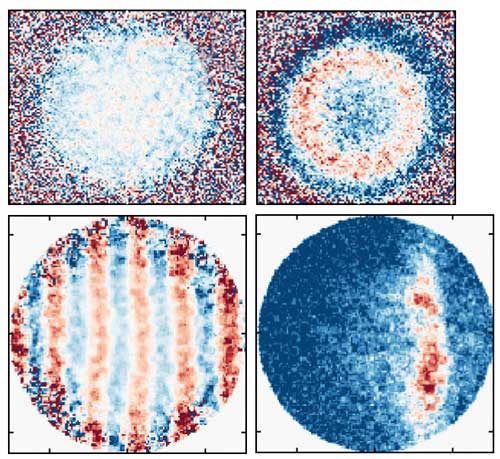 Scientists have invented a new imaging technique that produces rapid, precise measurements of quantum behavior in an atomic clock in the form of near-instant visual art.
Scientists have invented a new imaging technique that produces rapid, precise measurements of quantum behavior in an atomic clock in the form of near-instant visual art.
Mar 5th, 2018
Read more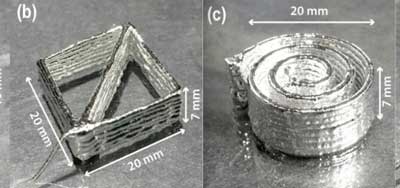 The advance paves the way toward the 3D printing of tall, complicated structures with a highly conductive gallium alloy.
The advance paves the way toward the 3D printing of tall, complicated structures with a highly conductive gallium alloy.
Mar 5th, 2018
Read more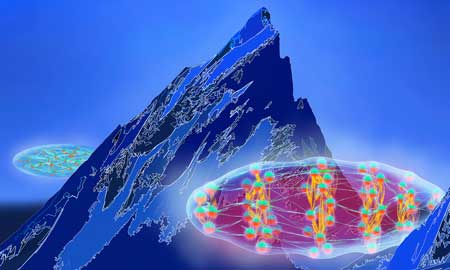 This new work paves the way for a novel understanding of paradigmatic states of quantum fluids, such as supersolids.
This new work paves the way for a novel understanding of paradigmatic states of quantum fluids, such as supersolids.
Mar 5th, 2018
Read more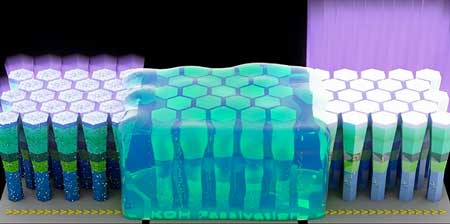 A simple chemical surface treatment improves the performance of nanowire ultraviolet light-emitting diodes.
A simple chemical surface treatment improves the performance of nanowire ultraviolet light-emitting diodes.
Mar 5th, 2018
Read more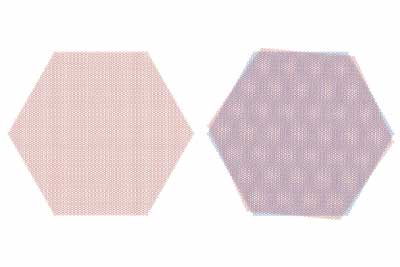 When rotated at a 'magic angle', graphene sheets can form an insulator or a superconductor.
When rotated at a 'magic angle', graphene sheets can form an insulator or a superconductor.
Mar 5th, 2018
Read more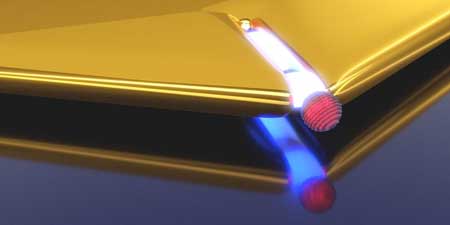 Researchers have built the foundations for a new field of nano-optics: they have succeeded in controlling the coupling of light and matter at room temperature.
Researchers have built the foundations for a new field of nano-optics: they have succeeded in controlling the coupling of light and matter at room temperature.
Mar 5th, 2018
Read more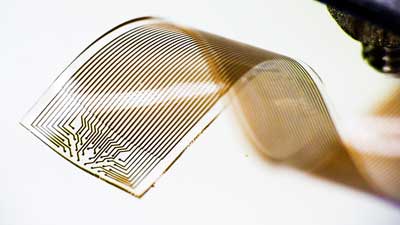 The new technology is based on a novel elastic material composite, which is biocompatible and retains high electrical conductivity even when stretched to double its original length.
The new technology is based on a novel elastic material composite, which is biocompatible and retains high electrical conductivity even when stretched to double its original length.
Mar 5th, 2018
Read more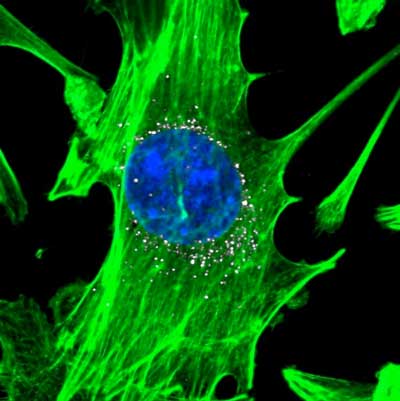 Study supports transport of therapeutic molecules into cells.
Study supports transport of therapeutic molecules into cells.
Mar 5th, 2018
Read more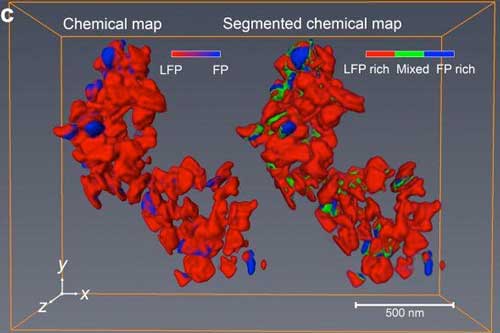 Researchers have developed a new technique that lets them pinpoint the location of chemical reactions happening inside lithium-ion batteries in three dimensions at the nanoscale level.
Researchers have developed a new technique that lets them pinpoint the location of chemical reactions happening inside lithium-ion batteries in three dimensions at the nanoscale level.
Mar 2nd, 2018
Read more Using nanotechnology, a team of researchers has eliminated the need for refrigeration by developing a new low-cost technique that creates a protective shield around protein biomarkers in the sample. With this method, the samples maintain 95 percent of their purity and the information on which important health-care decisions are based.
Using nanotechnology, a team of researchers has eliminated the need for refrigeration by developing a new low-cost technique that creates a protective shield around protein biomarkers in the sample. With this method, the samples maintain 95 percent of their purity and the information on which important health-care decisions are based.
Mar 2nd, 2018
Read more